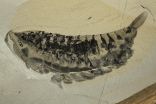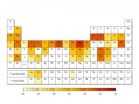(Press-News.org) University of Notre Dame applied mathematician Mark Alber and environmental biotechnologist Robert Nerenberg have developed a new computational model that effectively simulates the mechanical behavior of biofilms. Their model may lead to new strategies for studying a range of issues from blood clots to waste treatment systems.
"Blood clotting is a leading cause of death in the United States at this point," said Alber, who is The Vincent J. Duncan Family Professor of Applied Mathematics in the College of Science and an adjunct professor of medicine at the Indiana University School of Medicine, South Bend. "We can now use a very fast and biologically relevant computational model to study deforming structures of the clots growing in blood flow."
The new model may be adapted to study clot formation in blood vessels, which can pose the risk of detaching and migrating to the lungs, a fatal event. Clots in healthy people usually stop growing and dissolve on their own. The clots, which result from genetic deficiencies, injury, inflammation or such diseases as cancer and diabetes, can grow uncontrollably or develop irregular shapes, threatening to detach under the pressure of blood flowing through the vessels.
Biofilms are found on almost any moist surface including veins, water pipes, ship hulls, contact lenses and hospital equipment. Biofilms are aggregates of bacterial cells embedded in self-produced extracellular polymer substances (EPS). Some biofilms are beneficial, treating wastewater and allowing the biodegradation of environmental contaminants. Others are harmful, fouling industrial equipment, corroding pipes and forming cavities in teeth. Biofilms are of particular concern in human infections, as bacteria in biofilms are much more resistant to antibiotics.
Since biofilms are often found in flowing systems, it is important to understand the effect of fluid flow on biofilms. Biofilms behave like viscoelastic materials. They first stretch elastically, then continue stretching and eventually break, like gum. Most past biofilm models were not able to capture this behavior or predict biofilm detachment. The new model allows for the simulation of this complex behavior. Simulations show that lower-viscosity biofilms are more likely to stretch and form streamers that can detach and clog nearby structures.
The new model can be used to devise new strategies to better manage biofilms. For example, it can be used to promote beneficial biofilms in waste treatment systems, or prevent biofouling layers on membrane filtration systems. It also can help improve dental plaque removal with water irrigators or develop methods to clean catheters or surgical equipment.
"In the past, scientists typically studied bacteria in isolation. In more recent years, they have recognized the importance of biofilm structures and discovered how they are built, but earlier models failed to accurately predict the impact of inhomogeneous multicomponent structure of the biofilm including EPS, on its deformation under pressure from the fluid flow," said Alber, whose group developed the computational model in collaboration with the members of the Nerenberg laboratory.
"The new model simulations are important because they allow us to more realistically incorporate the viscoelastic properties of the biofilm," said Nerenberg, whose laboratory focuses on environmental biofilm processes. "This research will lead to major advances in our understanding of biofilm accumulation and persistence in natural and engineered systems."
INFORMATION:
Alber's work was supported by National Institutes of Health and Nerenberg's work was supported by the National Science Foundation. Their model was published this week (note to BC & MK: March 25) in the Journal of the Royal Society Interface.
TEMPE, Ariz. (March 27, 2015) - As more people move to different regions of the country it will require planners to use as many tools as they can to develop urban areas that satisfy population demands and not over burden the environment.
A new study from Arizona State University (ASU) details some of the dynamics at play as one region of the country, the Central Valley of California, braces for substantial population growth and all it entails. The study, based on computer simulations using the ASU Advanced Computing Center, of rural to urban land conversion shows that ...
March 27, 2015--A study by researchers at Columbia University's Mailman School of Public Health and colleagues in the Netherlands evaluated the relationship between nutritional conditions in very early life and adult health, and found that famine exposure during the first pregnancy trimester was associated with increases in mortality from a variety of causes other than cancer or cardiovascular disease.
This is the first study to quantify the possible long-term effects of nutrition deprivation at different stages of pregnancy and long-term mortality from causes of death ...
BUFFALO, N.Y. - A big bowl of mashed potatoes. What about spaghetti and meatballs? Sushi? Regardless of what you identify as comfort food, it's likely the attraction to that dish is based on having a good relationship with the person you remember first preparing it, according to the results of a new study by a University at Buffalo research team.
The findings have implications for better understanding how social factors influence our food preferences and eating behavior.
"Comfort foods are often the foods that our caregivers gave us when we were children. As long we ...
Milan, Italy - March 28, 2015 Research looking at risk of early mortality of British middle-aged women and osteoarthritis was presented today at the World Congress on Osteoporosis, Osteoarthritis and Musculoskeletal Diseases. It shows that any painful knee osteoarthritis is strongly associated with early overall and cardiovascular mortality. Interestingly these findings are independent to most of the known risk factors linked with early mortality. The study was based on the data from the Chingford Study. This is community based data from a cohort of middle-aged women followed ...
TORONTO, ON - What do butterflies, spiders and lobsters have in common? They are all surviving relatives of a newly identified species called Yawunik kootenayi, a marine creature with two pairs of eyes and prominent grasping appendages that lived as much as 508 million years ago - more than 250 million years before the first dinosaur.
The fossil was identified by an international team led by palaeontologists at the University of Toronto (U of T) and the Royal Ontario Museum (ROM) in Toronto, as well as Pomona College in California. It is the first new species to be described ...
Reclusive giant pandas fascinate the world, yet precious little is known about how they spend their time in the Chinese bamboo forests. Until now.
A team of Michigan State University (MSU) researchers who have been electronically stalking five pandas in the wild, courtesy of rare GPS collars, have finished crunching months of data and has published some panda surprises in this month's Journal of Mammalogy.
"Pandas are such an elusive species and it's very hard to observe them in wild, so we haven't had a good picture of where they are from one day to the next," said ...
Music performance is known to induce structural and functional changes to the human brain and enhance cognition. However, the molecular mechanisms underlying music performance have been so far unexplored. A Finnish research group has now investigated the effect of music performance (in a 2 hr concert) on the gene expression profiles of professional musicians from Tapiola Sinfonietta (a professional orchestra) and Sibelius-Academy (a music university).
Playing music enhanced the activity of genes involved in dopaminergic neurotransmission, motor function, learning and ...
In a new paper, a team of Yale researchers assesses the "criticality" of all 62 metals on the Periodic Table of Elements, providing key insights into which materials might become more difficult to find in the coming decades, which ones will exact the highest environmental costs -- and which ones simply cannot be replaced as components of vital technologies.
During the past decade, sporadic shortages of metals needed to create a wide range of high-tech products have inspired attempts to quantify the criticality of these materials, defined by the relative importance of ...
A new study from SciLifeLab at Uppsala University published in PLOS ONE shows that genes crucial for vision were multiplied in the early stages of vertebrate evolution and acquired distinct functions leading to the sophisticated mechanisms of vertebrate eyes.
One striking feature of vertebrates is the prominent role that vision plays in almost all major animal groups. The vertebrate eye has a unique organization and is known to have arisen at the time of the first vertebrates over 500 million years ago. A new study by the research team led by Xesús Abalo and Dan ...
Antioxidants provide long-term protection against the chain reactions of free radical processes, in other words, of the molecules that are capable of causing cell damage and generating various diseases. Free radicals harm our body by causing, in the best of cases, ageing and, in the worse, serious diseases. Lettuce is rich in antioxidants, as it contains compounds like phenolic acids, flavonoids, anthocyanins, and vitamins A and C, among other things.
Green, semi-red and red leaves
To conduct this research, which started in 2011 and in which researchers of the UPV/EHU ...


